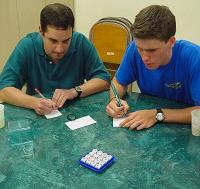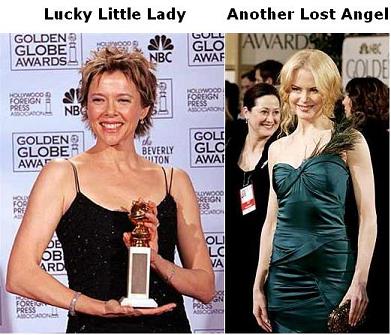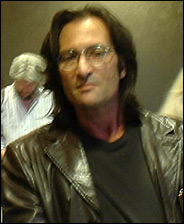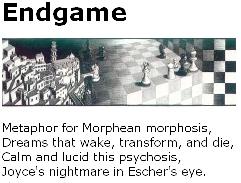Da Capo, Part II:
The Elegant Window
From a review of
The Nick Tosches Reader,
published by Da Capo Press:
“Elegant as a slow blues.”
— Rolling Stone
“Examples are the
stained-glass windows of knowledge.”
— Vladimir Nabokov
And so….
See also
Da Capo, Part II:
The Elegant Window
From a review of
The Nick Tosches Reader,
published by Da Capo Press:
“Elegant as a slow blues.”
— Rolling Stone
“Examples are the
stained-glass windows of knowledge.”
— Vladimir Nabokov
And so….
See also
Da Capo
You say I am repeating
Something I have said before. I shall say it again.
Shall I say it again?

|
Mies van der Rohe:
Mies in Berlin

Winner of
The Society of Architectural Historians
2002 Philip Johnson Award
for Excellence
Exhibition Catalog
"It would have been wiser for the new MoMA catalog… to have addressed the issue of his politics…. By ignoring such a central subject… the show gives off a mild stench of cover-up…. Only the German-born Rosemarie Haag Bletter (full disclosure: she is my wife) alludes to the verboten topic in her [catalog] essay on Mies's flirtation with crystal imagery, drawing a sharp parallel between the architect's extensive use of Kristallglas (plate glass) and the ensuing devastation of Kristallnacht, which erupted just three months after he left for the States."
"Mies's rigorously simplified structures, typified by grids of steel and glass and an absence of applied ornament, represented the Platonic ideal of modernism for many people."

and Version B,

from the date of Johnson's death
at his "famous crystalline box."
Was less more?
Diamonds Are Forever
" 'That old Jew gave me this here.' Egan looked at the diamond. 'I ain't giving this to you, understand? The old man gave it to me for my boy. It's worth a whole lot of money– you can tell that just by looking– but it means something, I think. It's got a meaning, like.'
'Let's see,' Egan said, 'what would it mean?' He took hold of Pablo's hand cupping the stone and held his own hand under it. '"The jewel is in the lotus," perhaps that's what it means. The eternal in the temporal. The Boddhisattva declining nirvana out of compassion. Contemplating the ignorance of you and me, eh? That's a metaphor of our Buddhist friends.'
Pablo's eyes glazed over. 'Holy shit,' he said. 'Santa Maria.' He stared at the diamond in his palm with passion.
'Hey,' he said to the priest, 'diamonds are forever! You heard of that, right? That means something, don't it?'
'I have heard it,' Egan said. 'Perhaps it has a religious meaning.' "
"We symbolize logical necessity
with the box ![]() )
)
and logical possibility
with the diamond ![]() ).
).
From
DIALECTIC AND EXISTENCE
IN KIERKEGAARD AND KANT
Nythamar Fernandes de Oliveira
Pontifical Catholic University
at Porto Alegre, Brazil
"Such is the paradoxical 'encounter' of the eternal with the temporal. Just like the Moment of the Incarnation, when the Eternal entered the temporal, Kierkegaard refers to the category of the Instant (Danish Ojeblikket, 'a glance of the eye, eyeblink,' German Augenblick) as the dialectical kernel of our existential consciousness:
If the instant is posited, so is the eternal –but also the future, which comes again like the past … The concept around which everything turns in Christianity, the concept which makes all things new, is the fullness of time, is the instant as eternity, and yet this eternity is at once the future and the past.
Although I cannot examine here the Kierkegaardian conception of time, the dialectical articulation of time and existence, as can be seen, underlies his entire philosophy of existence, just as the opposition between 'eternity' and 'temporality': the instant, as 'an atom of eternity,' serves to restructure the whole synthesis of selfhood into a spiritual one, in man’s 'ascent' toward its Other and the Unknown. In the last analysis, the Eternal transcends every synthesis between eternity and time, infinity and finiteness, preserving not only the Absolute Paradox in itself but above all the wholly otherness of God. It is only because of the Eternal, therefore, that humans can still hope to attain their ultimate vocation of becoming a Chistian. As Kierkegaard writes in Works of Love (1847),
The possibility of the good is more than possibility, for it is the eternal. This is the basis of the fact that one who hopes can never be deceived, for to hope is to expect the possibility of the good; but the possibility of the good is eternal. …But if there is less love in him, there is also less of the eternal in him; but if there is less of the eternal in him, there is also less possibility, less awareness of possibility (for possibility appears through the temporal movement of the eternal within the eternal in a human being)."
The Diamond
of Possibility
"We symbolize logical necessity with the box ![]() )
)![]() ).
).![]() p = ~
p = ~![]() ~p
~p![]() p = ~
p = ~![]() ~p.
~p.
And what do we
symbolize by ![]() ?
?
Old School Tie
“We are introduced to John Nash, fuddling flat-footed about the Princeton courtyard, uninterested in his classmates’ yammering about their various accolades. One chap has a rather unfortunate sense of style, but rather than tritely insult him, Nash holds a patterned glass to the sun, [director Ron] Howard shows us refracted patterns of light that take shape in a punch bowl, which Nash then displaces onto the neckwear, replying, ‘There must be a formula for how ugly your tie is.’ ”

“Algebra in general is particularly suited for structuring and abstracting. Here, structure is imposed via symmetries and dualities, for instance in terms of Galois connections……. diamonds and boxes are upper and lower adjoints of Galois connections….”

Evariste Galois
“Perhaps every science must
start with metaphor
and end with algebra;
and perhaps without metaphor
there would never have been
any algebra.”
— attributed, in varying forms
(1, 2, 3), to Max Black,
Models and Metaphors, 1962
For metaphor and
algebra combined, see
“Symmetry invariance
in a diamond ring,”
A.M.S. abstract 79T-A37,
Notices of the Amer. Math. Soc.,
February 1979, pages A-193, 194 —
the original version of the 4×4 case
of the diamond theorem.
Death and the Spirit,
Part IV
See also
Death and the Spirit, Part II, and
Death and the Spirit, Part III.
Go Tigers!
Recommended reading for the
Princeton Evangelical Fellowship (PEF):
Walter Kirn, Lost in the Meritocracy,
Atlantic Monthly Jan.-Feb. 2005

"Only by the form, the pattern,
Can words or music reach
The stillness."
— T. S. Eliot
I mean, seriously…
“The Comedians is about three men, Smith, Jones and Brown….“
“Again I was aware of the three names, interchangeable like comic masks in a farce.”
— Graham Greene, The Comedians, Penguin paperback, 1991, p. 23
Pico Iyer on Graham Greene in the current New York Review of Books:
“To play out the full logic….”
|
Brown, Jones, and Smith are suspected of a crime. They testify as follows: Brown: Jones is guilty and Smith is innocent. Jones: If Brown is guilty then so is Smith. Smith: I’m innocent, but at least one of the others is guilty. Assuming all testimony is true, who is innocent and who is guilty? Assuming that the innocent told the truth and the guilty told lies, who is innocent and who is guilty? — Mathematical logic |
But seriously…
A follow-up to the previous "tiger" entry (which was about an old but good dirty joke).
I just subscribed to The New York Review of Books online for another year, prompted by my desire to read Roger Shattuck on Rimbaud, a tiger of another sort:
"How did this poetic sensibility come to burn so bright?"
The Shattuck piece is from 1967, the year of The Doors' first album. (See Sunday's Death and the Spirit, Part II.)
In memory of comedian
Gene Baylos, who died
on Jan. 10, 2005:
From the dark jungle
as a tiger bright,
Form from the viewless Spirit
leaps to light.
— Rumi, "Reality and Appearance"
Globe Song
Are you a lucky little lady
in The City of Light
Or just another lost angel…
City of Night
— Jim Morrison, L.A. Woman
(See Sunday's noon entry.)

Of course, it's the lost angels
that really get to us:

Death and the
Spirit, Part II
Are you a lucky little lady
in The City of Light
Or just another lost angel…
City of Night
— Jim Morrison, L.A. Woman
Fourmillante cité,
cité pleine de rêves,
Où le spectre en plein jour
raccroche le passant
— Baudelaire,
Les Fleurs du Mal,
and
Notes to The Waste Land
"When you got the mojo, brother —
when you're on the inside —
the world is fantastic."
— Pablo Tabor in Robert Stone's
A Flag for Sunrise,
Knopf, 1981, p. 428
|
Now it was Avril's turn to understand and he was frightened out of his wits.
"The Science of Luck," he said cautiously. "You watch, do you? That takes a lot of self-discipline." "Of course it does, but it's worth it. I watch everything, all the time. I'm one of the lucky ones. I've got the gift. I knew it when I was a kid, but I didn't grasp it." The murmur had intensified. "This last time, when I was alone so long, I got it right. I watch for every opportunity and I never do the soft thing. That's why I succeed." Avril was silent for a long time. "It is the fashion," he said at last. "You've been reading the Frenchmen, I suppose? Or no, no, perhaps you haven't. How absurd of me." "Don't blether." The voice, stripped of all its disguises, was harsh and naive. "You always blethered. You never said anything straight. What do you know about the Science of Luck? Go on, tell me. You're the only one who's understood at all. Have you ever heard of it before?" "Not under that name." "I don't suppose you have. That's my name for it. What's its real name?" "The Pursuit of Death." |
Anagrams
In memory of Danny Sugerman,
late manager of The Doors:

"Mr Mojo Risin" = "Jim Morrison."
"Audible Era" = "Baudelaire."
"Bad Rumi" = "Rimbaud."
From the dark jungle
as a tiger bright,
Form from the viewless Spirit
leaps to light.
— Rumi, "Reality and Appearance,"
translated by R. A. Nicholson
(See also Death and the Spirit
from Twelfth Night, 2005, the date
of Danny Sugerman's death.)
Geometry Download
There is a new web page offering my notes on finite geometry in a very large (about 7 MB) zipped folder for downloading. (Individual notes may be previewed without downloading the folder.)
State of Grace
|
|
Utmost is relative — Have not or Have Adjacent sums Enough — the first Abode On the familiar Road Galloped in Dreams — Emily Dickinson |
“Only through time time is conquered.”
— T. S. Eliot, Four Quartets
Hope of Heaven
“Heaven is a state,
a sort of metaphysical state.”
— John O’Hara, Hope of Heaven, 1938
“The old men know
when an old man dies.”
— Ogden Nash
See also the five Log24 entries
ending with the 9 PM entry of
Tuesday, December 10, 2002.
From today’s New York Times:
“Joseph S. Frelinghuysen, whose memoir, Passages to Freedom, chronicled his escape from a prison camp in Italy during World War II, died on Saturday in Morristown, N.J. He was 92.”
A web page on the Indiantown Gap army camp quotes Frelinghuysen’s Passages to Freedom… He is describing July 1942, just before Frelinghuysen’s unit was sent overseas:
“In the last week of July, his wife Emily came to Indiantown to stay at the old Hershey Hotel so they could steal a few of the remaining hours together. He explained, ‘On my last night with Emily, she wore an evening dress with a full green and rose colored skirt, and I put on my best garrison uniform …. we had California champagne, lobster, and flaming crepes with ice cream. We danced to some old tunes; Cole Porter’s ‘Night and Day’ and Irving Berlin’s tunes from ‘Top Hat.’ Then they played a new one slowly, and a young girl sang the lyrics to ‘The White Cliffs of Dover.’ Noting that England had been at war for three years, he reminisced that it was a song that speaks of ‘love and laughter’ and ‘peace ever after.’ Nostalgically, he said, ‘We finished the dance in an embrace. She took my hand and we walked out through the lobby onto the terrace for a last look at the gardens in the pale light of a quarter moon.’ “
Realism
In memory of Humphrey Carpenter:
"Aslan's last words come at the end of The Last Battle: 'There was a real railway accident […] Your father and mother and all of you are–as you used to call it in the Shadow-Lands–dead. The term is over: the holidays have begun. The dream is ended: this is the morning.' The final paragraph of the novel, which follows these words, functions as a coda; it is full of the conventions which signal the wrapping up of a story. This direct speech is the true climax of the Chronicles. Aslan is given the last word in these quiet but emphatic lines. He is the ultimate arbiter of reality: 'There was a real railway accident.' Plato, in addition to the Christian tradition, lies behind the closing chapters of The Last Battle….
'It's all in Plato, all in Plato: bless me, what do they teach them at these schools!' "
— Joy Alexander, Aslan's Speech
See also From Tate to Plato (Nov. 19, 2004), Habeas Corpus (Nov. 24, 2004), and the Log24 entries of last Friday through Sunday.

Another Death
“I should be glad of another death,” wrote T. S. Eliot in “Journey of the Magi.”
But not Humphrey Carpenter‘s. Carpenter, like Eliot and Guy Davenport (see last two days’ entries) died on a January 4th. He will be missed.
— Foucault’s Pendulum
by Umberto Eco,
Professor of Semiotics at
Europe’s oldest university,
the University of Bologna.
The Club Dumasby Arturo Perez-Reverte
|
“In 1603, at Monte Paderno, outside Bologna, an alchemist (by day a cobbler) named Vicenzo Cascariolo discovered the Philosopher’s Stone, catalyst in the transformation of base metals into gold, focus of the imagination, talisman for abstruse thought. Silver in some lights, white in others, it glowed blue in darkness, awesome to behold.”

“For the University of Bologna hosting an International Conference on Bioluminescence and Chemiluminescence has a very special significance. Indeed, it is in our fair City that modern scientific research on these phenomena has its earliest roots….
‘After submitting the stone
to much preparation, it was not
the Pluto of Aristophanes
that resulted; instead, it was
the Luciferous Stone’ ”
|
From one of the best books
of the 20th century: The Hawkline Monsterby Richard Brautigan
|
The Beginning of a Story
by Guy Davenport
Lo Splendore della Luce a Bologna
“The locomotive bringing a trainload of philosophers to Bologna hissed and ground to a standstill in the long Appenine dusk to have its headlamps lit and to be dressed in the standards of the city and the university.”
The train wreck at 12:50 pm local time (6:50 AM EST) Friday, Jan. 7, 2005, 25 miles north of Bologna.
A northbound freight train collided with a passenger train traveling south from Verona to Bologna.
From an essay on Davenport I found Friday morning, well before I learned on Friday afternoon (Eastern Standard Time) of the train wreck:
“A disciple of Ezra Pound, he adapts to the short story the ideogrammatic method of The Cantos, where a grammar of images, emblems, and symbols replaces that of logical sequence. This grammar allows for the grafting of particulars into a congeries of implied relation without subordination. In contrast to postmodernists, Davenport does not omit causal connection and linear narrative continuity for the sake of an aleatory play of signification but in order to intimate by combinational logic kinships and correspondences among eras, ideas and forces.”
See also
Friday’s Log24 entries and
Davenport’s Express.
24

The Star
of Venus
“He looked at the fading light
in the western sky and saw Mercury,
or perhaps it was Venus,
gleaming at him as the evening star.
Darkness and light,
the old man thought.
It is what every hero legend is about.
The darkness which is more than death,
the light which is love, like our friend
Venus here, or perhaps this star is
Mercury, the messenger of Olympus,
the bringer of hope.”
— Roderick MacLeish, Prince Ombra
Related material:
The Devil and Wallace Stevens,
Journey of the Magi,
and

“The time of darkness is past.
The winter solstice brings
the victory of light.”
Remembrance
“Great is your love, Prince Ombra answered finally, and eternal is its mystery to me. Yet honor was not denied me in the fire of Creation. Ombra, lord vanquisher of heroes, pledges this, O brother of David, Arthur the King, and
— Prince Ombra, by Roderick MacLeish
“There’s rosemary, that’s for remembrance.”
“A corpse will be
transported by express!“
(Ideograms for Guy Davenport;
see also previous entry.)
“At the still point,
there the dance is.”
— T. S. Eliot
Illustration from
Tuesday, April 22, 2003:
Temptation
|
|
The Star |
|
Related material:
The Devil and Wallace Stevens
In Memory of
Guy Davenport
From the day Davenport died:

“At Merton College, Oxford,
he wrote the first thesis on Joyce
to be accepted by the university.”
From a very informative essay
on Davenport’s aesthetics:
“T.S. Eliot’s experiments
in ideogrammatic method
are equally germane to Davenport,
who shares with the poet
an avant-garde aesthetic and
a conservative temperament.
Davenport’s text reverberates
with echoes of Four Quartets.”
— Andre Furlani
“At the still point, there the dance is.”
— T. S. Eliot, Four Quartets,
quoted in the epigraph to
the chapter on automorphism groups
in Parallelisms of Complete Designs,
by Peter J. Cameron,
published when Cameron was at
Merton College, Oxford.
See also
Elegance.
Death and the Spirit
A meditation for Twelfth Night
on "the whirligig of time"
Yesterday's entry provided an approach to The Dark Lady, Kali, that was, in Freas's apt word, "ridiculous." The illustration below, "Mate," is an attempt to balance yesterday's entry with an approach that is, if not sublime, at least more serious. It is based on a similar illustration from Jan. 31, 2003, with actress Judy Davis playing The Dark Lady. Today it seems appropriate to replace Davis with another actress (anonymous here, though some may recognize her). I once knew her (unlike Davis) personally. One of my fondest memories of high school is reading Mad Magazine with her in the school lunch room. Our lives diverged after high school, but I could happily have spent my life in her company.
– S. H. Cullinane, Twelfth Night, 2005

A diamond and its dual "whirl" figure—
or a "jewel-box and its mate"
As for Eisner and "The Spirit,"
which has been called
"the quintessential noir detective series,"
those preferring non-graphic stories
may picture Spade or his creator,
Dashiell Hammett, in the title role.
Then, of course, there are Eisner's later
story, "A Contract With God,"
John 4:24, and 1916 4/24.
“Mr. Denker was of the romantic school
of chess – always looking to attack.”

Related material:
From Endgame:

Black the knight upon that ocean,
Bright the sun upon the king.
Dark the queen that stands beside him,
White his castle, threatening.
In the shadows’ see a bishop
Guards his queen of love and hate.
Another move, the game will be up;
Take the queen, her knight will mate.
The knight said “Move, be done. It’s over.”
“Love and resign,” the bishop cried.
“When it’s done you’ll stand forever
By the darkest beauty’s side.”
From Log24.net, Feb. 18, 2003:

Kali, a goddess sometimes depicted
as a dancing girl; Kali is related to kAla,
time, according to one website, as
“the force which governs and stops time.”
See also the novel The Fermata,
by Nicholson Baker.

From an entry of Sunday, Jan. 2,
the day Denker died:
“Time had been canceled.”
— Stephen King, The Shining
From Truth and Style, a tribute
to the late Amy Spindler, style editor
of the New York Times Magazine:
“I don’t believe in truth. I believe in style.”
— Hugh Grant in Vogue magazine, July 1995
From a related page,
The Crimson Passion:
“He takes us to the central activity
of mathematics—which is imagining….”
— Harvard Magazine on
Harvard mathematician
and author Barry Mazur.
For related material on Mazur, see
“The teenagers aren’t all bad.
I love ’em if nobody else does.
There ain’t nothing wrong
with young people.
Jus’ quit lyin’ to ’em.”
“Time had been canceled….
And here he was again, in the ballroom.”
— Stephen King, The Shining
From a year ago today:
“Heaven was kind of a hat on the universe,
a lid that kept everything underneath it
where it belonged.”
— Carrie Fisher,
Postcards from the Edge
|
“720 in |

“What’s funny, honey?”
— The Shining
Powered by WordPress